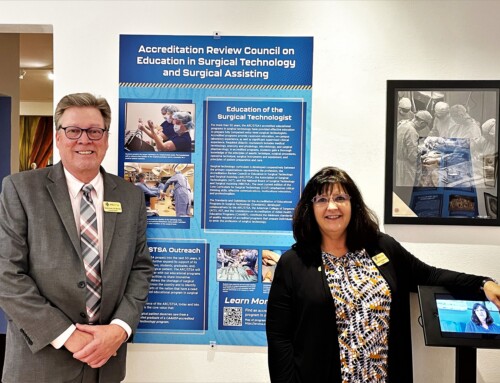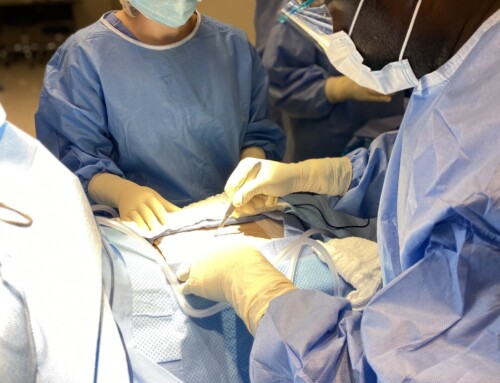Last month, educators’ hearts and minds came together at EdAccred’s first Better Together: Success Strategy Talk of 2022. During the session, “Clinical Success Strategies During the Pandemic,” surgical technology and surgical assisting educators discussed strategies for continued student success in meeting clinical requirements when faced with the current challenges of the pandemic. Take a closer look below at some key tips and strategies – and, “relationship advice” – participants shared. Sharing is caring!
Ask for What You Need Could clinical experiences be secured outside your immediate community if you had access to additional resources from the institution or grant funding?
- Identify resources needed to expand students’ clinical opportunities and estimate related expenses.
- Approach administration and advocate for what the students need. When one educator’s students had to travel to other cities and even other states for access to clinicals, their school provided students with gas cards, room and board, food stipends, and relocation expenses.
Communication and Feedback are Key Educators shared the importance of not only building relationships with clinical sites, but also maintaining those relationships. Increased cooperation and communication benefits students.
- Reach out and check in with sites regularly, even if you don’t currently have students there.
- Have students complete a clinical site survey for each rotation at each site to rate their experiences and provide feedback regarding preceptors in various areas. Several educators share these results with OR supervisors/managers so they know what is working well and can collaborate to resolve any possible issues.
We’re All in This Together Cooperation with not only hospital staff, but also with other programs you share clinical sites with ensures student success.
- Team up with other educators in your area as colleagues with the same mission, rather than competitors for affiliated facilities and clinical slots. Brainstorm about how you can all work together to benefit the students, facilities, community and patients.
- Be willing to switch up your own rotation schedule in the spirit of cooperation, or, approach the OR supervisor with your needs for students. Ask if they can help create a rotation schedule between the schools.
- Identify whether students from other programs are at the same level clinically as yours. If your students are on their second or third rotation, and the other students are on their first, work together with so less-experienced students can build a solid foundation, while more experienced students can ensure they meet all specialty requirements.
Speak Their Love Language Who doesn’t love to be recognized and appreciated? Programs shared the ways they recognize awesome preceptors, ranging from handwritten notes and cards from students shared with the preceptors and their supervisors, to bringing sweet treats and food, to presenting “Outstanding Preceptor” awards that can be displayed at the facilities. Educators said that these small acts of recognition helped to further strengthen their relationship with facilities and reported that their sites were more flexible and willing to work with them when they saw the difference they were making in the programs.
Share Struggles to Find Solutions Educators brainstormed to help programs currently facing challenges and delays in clinical.
- Delays in processing of clinical onboarding paperwork cause headaches for many educators. Streamline the onboarding process by identifying the clinical site that requires the most stringent documentation from your students, complete all of those steps for each student well in advance of their first rotation (ideally immediately after students enter the program) so that all needed documentation is ready to send to any site, and there is no delay for students entering clinical. One participant has found that sharing documents through a secure platform, such as Google Drive, works well for their program and clinical sites.
- Lack of smaller/elective cases, with only emergent cases available, has reduced typical stepping stones for student progression to the big cases during the pandemic. An educator shared how they use their surgery center sites to the max. Students are assigned to smaller surgery centers to practice and master basic skills first; and then they are assigned to hospitals to practice advanced skills in a more efficient manner, having obtained greater confidence and understanding of the OR.
See the Silver Lining Educators shared the unexpected positive outcomes they’ve experienced while their students were delayed in clinical during this pandemic.
- If students do experience a delay in access to clinicals due to the pandemic, keep their skills sharp by weekly lab refreshers. Many shared that this has actually increased test scores.
- When students aren’t in clinical, this lends more time to devote to clinical paperwork and new site recruiting. One tip shared was to recruit all hospitals within a big hospital system as clinical sites, leading to a streamlined onboarding process (plus more sites!).
- Many sites are in desperate need of surgical technologists. Work out an agreement where the site gives your program more slots in exchange for your grads.
Thanks again to all the amazing educators who joined us (not all pictured below). You inspire us daily!



